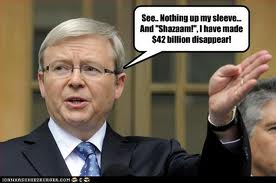 I ran across an awesome article while “Googling around” the other day. It was titled “Nine Keys for Reinvigorating Board Leadership,” and it was written by Paul Connolly, a Senior Vice President of TCC Group. While digesting this article, my mind first turned to those executive directors who I’ve seen in the last decade that actively try to disengage their board volunteers. After mentally traveling down that road (ugh … and it is an ugly road), I got more positive in my thinking and focused on all of the crazy things I’ve witnessed in the name of “board engagement”.
I ran across an awesome article while “Googling around” the other day. It was titled “Nine Keys for Reinvigorating Board Leadership,” and it was written by Paul Connolly, a Senior Vice President of TCC Group. While digesting this article, my mind first turned to those executive directors who I’ve seen in the last decade that actively try to disengage their board volunteers. After mentally traveling down that road (ugh … and it is an ugly road), I got more positive in my thinking and focused on all of the crazy things I’ve witnessed in the name of “board engagement”.
The following are just a few quick things I’ve seen over the years:
- Of course, many organizations have turned to the good old fashion “mission moment” as part of their board meeting agenda.
- How many “board retreats” have I seen organized all in the name of “engagement”? Ugh … too many!
- One organization I worked with decided that social opportunities such as “Happy Hour” should be a part of their engagement solution.
- I’ve heard some boards talk about putting together a mentoring program that hooks new board members up with tenured ones.
- One organization I know even rented a trolley, loaded up its board volunteers and donors, and drove it from site-to-site as part of a facilities tour strategy focused on getting key stakeholders re-engaged in mission.
- Oh yeah. You can’t forget about the “big conference” strategy where the executive director takes a board member (or a few) to one of those big inspirational conferences. When everyone returns, those board members are asked to “make a presentation” back to their fellow board members about what they learned. Hopefully, sparks of excitement ignite interest and activity.
 Oh, the things I’ve seen. I could go on and on and on. I doubt that there isn’t anything an executive director, who actually wants an engaged board, would do to achieve this goal. Of course, when this topic of conversation usually comes up, there is an overwhelming desire to bypass “strategy” and go right to “tactics”
Oh, the things I’ve seen. I could go on and on and on. I doubt that there isn’t anything an executive director, who actually wants an engaged board, would do to achieve this goal. Of course, when this topic of conversation usually comes up, there is an overwhelming desire to bypass “strategy” and go right to “tactics”
When I read the article by Paul Connolly, I had a moment of clarity because he didn’t go right to tactics. He focused on the following nine strategies:
- Encourage board members to tell each other what motivates them to serve.
- Educate board members about the organization and their responsibilities.
- Hold the board accountable for its own performance and conduct a candid board assessment.
- Compel the board to continually plan for the future and focus on results.
- Infuse board meetings with more meaning.
- Add some new board members and graduate some existing ones.
- Nurture future leadership.
- Develop a synergistic board-CEO partnership.
- Consider alternative models for governance.
 Ohhhhhhh! Ahhhhhhh! Has your curiosity been piqued? I know mine was. If you are intrigued and want to learn more about more deeply engaging your board volunteers, then I have two suggestions:
Ohhhhhhh! Ahhhhhhh! Has your curiosity been piqued? I know mine was. If you are intrigued and want to learn more about more deeply engaging your board volunteers, then I have two suggestions:
First, I strongly urge you to read Paul Connolly’s article “Nine Keys for Reinvigorating Board Leadership“.
Second, circle back here to DonorDreams blog and engage your fellow non-profit professionals in a discussion using the comment box found below. We can all learn from each other, especially if we share examples of what we’re doing and what has worked (or not worked) for us.
So, are you one of those executive directors who focuses on deepening board engagement? If so, why? If not, then why not? What things have you done or seen others do in the name of board engagement? Did Paul Connolly’s article trigger any ideas? If so, please share.
Here’s to your health!
Erik Anderson
Founder & President, The Healthy Non-Profit LLC
www.thehealthynonprofit.com
erik@thehealthynonprofit.com
http://twitter.com/#!/eanderson847
http://www.facebook.com/eanderson847
http://www.linkedin.com/in/erikanderson847



























